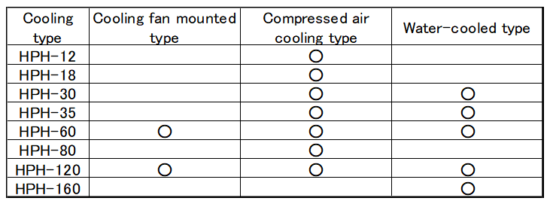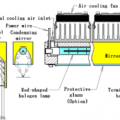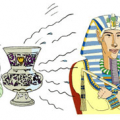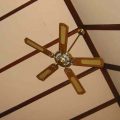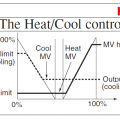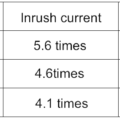Continuous use of halogen point heaters always requires cooling.
This is because the heat resistance temperature of the halogen lamp seal is 300°C.
If the lamp is used continuously without cooling, the temperature of the sealing part will exceed 300℃ and the halogen lamp will break.
Also, during heating, the entire halogen point heater becomes hot.
Avoid using it at the heat-resistant temperature limit, and be sure to cool it down.
When heating at high temperature, please be sure to cool it because it affects the damage of the halogen lamp seal part and the deterioration of the main body and involves to the lifespan. It is recommended that the controller be equipped with safety measures such as shutting off the heater if cooling is cut off.
If the heater does not turn on continuously within 1 minute, it may not reach 150℃ and cooling may not be necessary.
If user do not use the cooling unit, check the temperature of the lamp base before using it.
There are three types of cooling methods for halogen heaters: a cooling fan mounted type, a compressed air cooling type, and a water-cooled type.
Always cool the cooling fan mounted type and the compressed air cooling type.
The following are the characteristics of each cooling method.
(1) Cooling fan mounted type
It can be used only with the heater controller.
The power of the cooling fan is supplied from the heater controller. The usage environment is assumed to be at room temperature.
(2) Compressed air cooling type
It requires a heater controller and an air compressor, but it is small.
Use the air flow rate at about 20L/min per 100W of heater power.
The pressure is assumed to be the general maximum pressure of 0.7~0.9MPa.
(3) Water-cooled type
A heater controller and chiller (cooling water) are required, but it can also be used in a vacuum container.
The minimum flow rate of cooling water is 0.5 L/min per 1 kW of heater power.
From the viewpoint of safety, we recommend at least twice the minimum flow rate.
The cooling water temperature is assumed to be about 15 ℃. If the cooling water is too low, there is a risk of electric leakage due to condensation or water droplets generated from the condensation. It is assumed that the pressure will be 200 kPa or less. If it is over 300kPa, please contact us.
 HEAT-TECH Best Technology Online Shop
HEAT-TECH Best Technology Online Shop 
